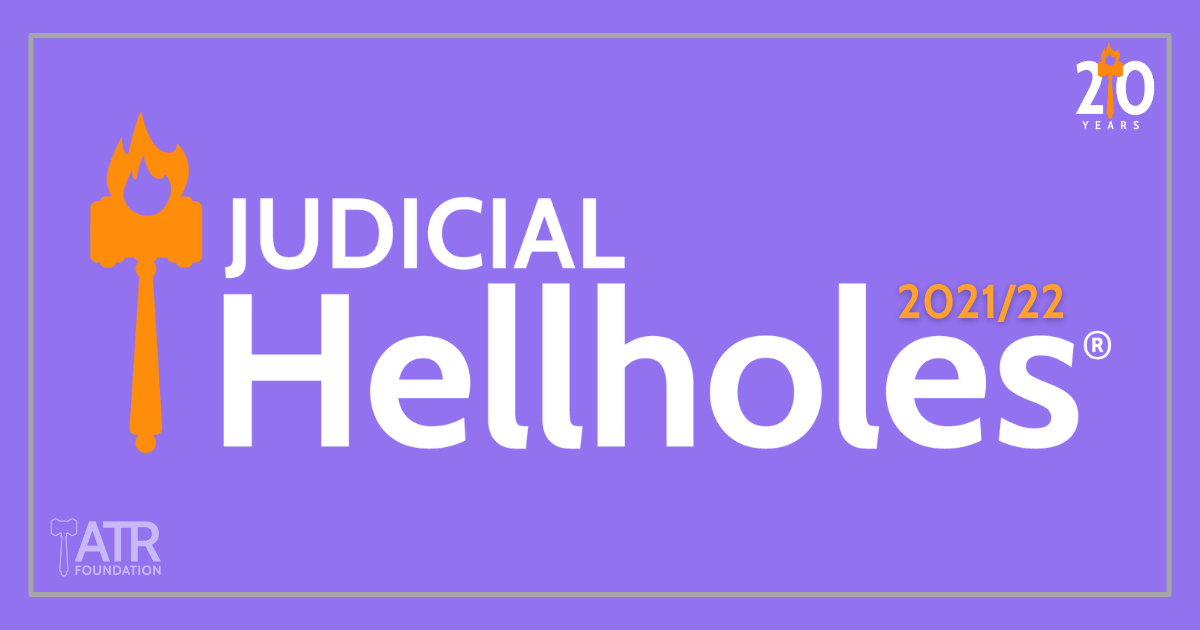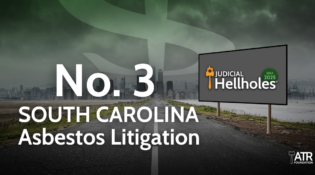Plaintiffs’ Attorneys See Media As Co-counsel in Mass Tort Litigation
Plaintiffs’ attorneys like to give impassioned courthouse-steps speeches about the importance of fair trials and the sanctity of the judicial process. But despite this rhetoric, too often their behavior is more akin to Roxie Hart’s lawyer Billy Flynn in the musical Chicago. In Flynn’s rollicking main number, Razzle Dazzle, he boasts how he practices law and sways juries: “Give ’em the old flim flam flummox; Fool and fracture ’em; How can they hear the truth above the roar?” In case after case, it seems that plaintiffs’ attorneys have taken Flynn’s lesson to heart, creating a roar in the media – or worse – to obscure the truth in court.
Most recently, The New Yorker published a story about Johnson & Johnson and its long-running talc litigation. The company is attempting to resolve the talc-related claims against it through a process that Judge Michael Kaplan of the U.S. Bankruptcy Court called “the optimal venue for redressing the harms of both present and future talc claimants in this case—ensuring a meaningful, timely, and equitable recovery.”[1] In February, Judge Kaplan ruled that Johnson & Johnson’s subsidiary acted in “good faith” when it commenced a bankruptcy case to achieve that laudable goal.
As Judge Kaplan’s ruling is reviewed today by the U.S. Court of Appeals for the Third Circuit, the plaintiffs’ bar seems unwilling to let the case’s facts and legal arguments speak for themselves. Instead, as their communications with the New Yorker show, they helped orchestrate a media broadside in the form of a misleading 8,000-word article riddled with false statements, half-truths and omitted facts they then promoted tirelessly on social media. This pattern of lacing the record with inflammatory statements for the press and social media to amplify has real – and troubling – consequences, as evidenced by the violent threats leveled at Judge Kaplan and his staff on social media, voicemails, and emails since the plaintiffs’ attorneys ramped up their media campaign.
But the plaintiffs’ bar has a long history of these cynical tactics.
In 2018, while he was actively directing litigation against Johnson & Johnson, plaintiffs’ attorney Mark Lanier instigated and was the primary source for a story in Reuters attacking the company and parroting his unfounded legal arguments. Indeed, in a recent sworn affidavit Lanier admitted to his role in pushing the story and to being its primary source. Shortly after the Reuters story ran, Lanier went on CNBC and bragged that “It serves my purposes as a litigator to say, ‘Yes, get their attention; keep driving the stock down.’” To Lanier, if driving down a stock through a media blitz gets him paid, the end justifies the means, even if he impacts hundreds of thousands of shareholders and retirement accounts, not to mention thousands of company employees.
In advance of the hearing last February before Judge Kaplan on the issue now up on appeal, the plaintiffs’ team ran the same playbook. The record is clear that they again funneled documents disclosed in the litigation to Reuters. Whether the intended result was to sway the scales of justice or smear Johnson & Johnson in the press to toy with its stock price, the fact is that plaintiffs’ attorneys use the media as their co-counsel.
Now, plaintiffs’ attorneys are at it again, persuading The New Yorker to print their allegations as if they were facts. One of the sources The New Yorker cites is the plaintiffs’ attorneys’ hired gun expert, Dr. David Egilman, who testifies that, every time he looks, he finds asbestos in tissue of customers who use Johnson & Johnson’s Baby Powder. In addition, Dr. Egilman recently testified that, when shown a picture of the Orion constellation, it was a depiction of talc. To someone with a hammer, everything looks like a nail. What is also significant is that neither of these aspects of Dr. Eligman’s background were mentioned by The New Yorker.
The magazine also failed to disclose that, in 2007, Dr. Egilman conspired with others to violate a protective order in a case regarding the drug Zyprexa, and he provided hundreds of cherry-picked confidential documents to various media outlets—including by using a sham subpoena. A federal district court held extensive hearings and strongly rebuked Dr. Egilman for his conduct, noting that he and his conspirators “executed the conspiracy using other people as their agents in crime.”
There should be no doubt that the bottom line—their 30%-or-more contingency fee—motivates every step of the plaintiffs’ lawyers’ legal strategy. It’s how they hope to secure their own financial windfall and keep paying billions of dollars for predatory, plaintiff-seeking ads.
This behavior—and the seemingly cavalier attitude that occasional wrist-slaps for ethical lapses are just a price of doing business – should shock and concern us all. Our judicial system is based on rules, but it also relies on a shared understanding of norms, principles, and truth-telling—even when it’s not convenient or may be unfavorable to us. Witnesses must swear to “tell the truth, the whole truth, and nothing but the truth.” Professional codes of ethics demand rigorous adherence to both propriety and transparency.
Sadly, legal ethics and respect for our country’s judicial system don’t seem to mean much to some lawyers. Despite being called out by judges for deceitful tactics, some members of the plaintiffs’ bar keep behaving as if a separate set of rules—or perhaps no rules at all—applies to them.







